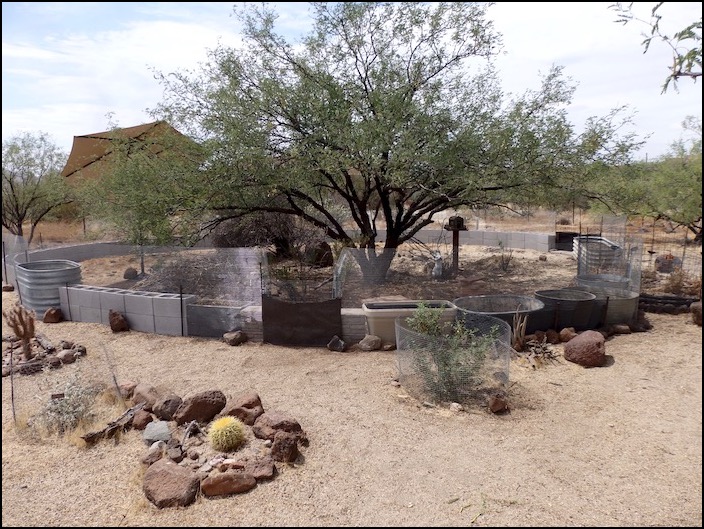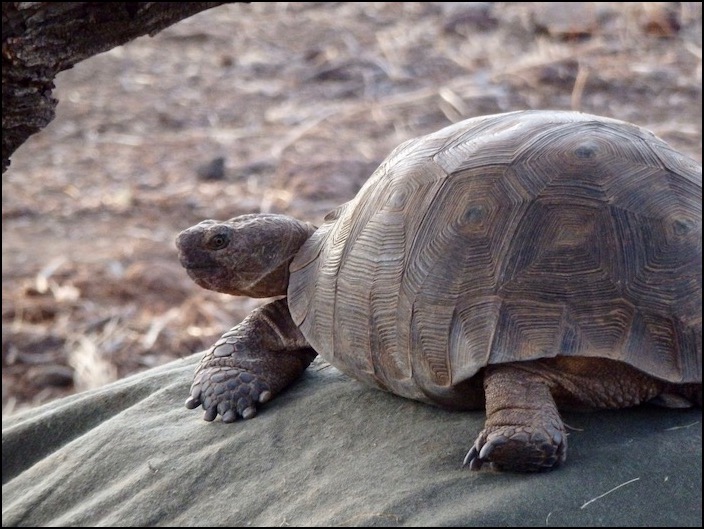Slo Mo
The June ad said there were over 100 Sonoran Desert tortoises needing homes. I had heard about the Arizona Game and Fish Department’s tortoise adoption program before but I was not eager to fulfill the extensive and meticulous requirements for a desert tortoise habitat and care. https://www.azgfd.com/wildlife/nongamemanagement/tortoise/captivecare/ This summer, it did not seem so daunting, and I really wanted to give a non-releasable desert tortoise a home and welcome a member of this ancient species to our family.
The Sonoran Desert tortoise is a protected species and not allowed to be taken from the wild. However, some people do take them out of their natural habitat or find injured tortoises. AZGFD rescues captive tortoises and cannot release them back to their native habitat or risk spreading disease. They also want to protect wild tortoises’ adaptive genes, habitat and natural food supply. Each rescued tortoise is tagged and must be returned to AZGFD if caregivers move out of Arizona and cannot find another responsible family or friend to register as guardian or otherwise cannot take care of their tortoise.
Building a Tortoise Home
The enclosure was required to be a predator-secure, non-escapable (tortoises are expert escape artists), minimum 18x18’ space. I started building a concrete block and wire fence enclosure in the high heat of June. Parceling out my strength and energy by working on the project a few hours each morning, I finished the circular 30-foot diameter enclosure in July, surrounding a large mesquite tree and smaller palo verde tree and a substantial native shrub. I continually re-worked the design in my mind and on the ground and included planters as part of the wall to make it an aesthetic as well as functional masterpiece.
 Desert Tortoise Enclosure just completed
Desert Tortoise Enclosure just completed
After filling out a long application detailing how I met the stringent requirements and sending in a number of photos, I was very excited to have my tortoise enclosure and burrow approved. I was so ready to adopt a tortoise!
Alas for me, but great for the tortoises needing homes, all were now adopted! Crestfallen, I agreed to be put on a long waiting list and hoped to have a tortoise family member this year before the adoption period ended in late September when the tortoises begin to brumate. Brumation is the cold-blooded animals' version of hibernation.
Adoption Day
The long-anticipated adoption day came September 14. I got the name "Moma" with visions of an ancient Hawaiian or Polynesian ruler and felt that my tortoise would be male. There were 4 adult tortoises for adoption when I arrived at the earliest appointment of the day, 2 males and 2 females. I loved them all. The 40-50 year old male was impressive in size but not friendly to me. We really didn't connect, other than him saying that he didn't like how the program coordinator placed him in the sun to meet me (he turned right around to go back to his burrow).
The other male, called “Nathan,” estimated to be about 20 years old, connected with me and felt warm and interested. One female was found injured from being mauled by a dog, and had a missing eye. Her other eye was damaged and may require removal later. The other female (about 10 years old) was brought in after eating chili peppers on her former person's farm. She was frantic and in pain when brought in and surrendered. The veterinarian gave her morphine for the pain, which calmed her body and she fully healed in a few weeks. She was friendly and lovely. However, "Nathan" connected well again on my second view of all the tortoises, while the older male again did not.
On the way home with “Nathan,” the name I had been getting, “Moma,” shortened just to "Mo." Spirit told me Moma was a composite name. "Mo" for a male; "Ma" for a female. The name fits him, and he looks at me directly when I address him as “Mo.”
 Mo on top of his burrow
Mo on top of his burrow
Mo explored his enclosure and loved the patches of Bermuda grass I had been growing since June for him. He also munched at the native snake weed, which grew in patches around the enclosure from the last rain. I also offered him pieces of recommended native plants, which grow on my land, and grass hay. A desert tortoise’s main diet is grass, fresh or dried. In October, I will be seeding native grasses and wildflowers and planting other native plants in his enclosure. Our winter rains will help create a lush habitat for him in the spring when he becomes active again and likely provide food for the rest of the year.
Burrow Version #2
As a new tortoise mother, I am anxious to do the right things for Mo. The day after he arrived, I was concerned when I put a thermometer in his burrow and found the temperature was higher than recommended, despite the burrow being under tree branches and with a large patio umbrella over it. Even dampening the outside of the burrow didn't seem to help. There is a danger of death if a tortoise burrow stays above 90 degrees for long.
In June, when I built the burrow, the sun was high and the area was partly shaded most of the day by a large mesquite tree. In mid September, with the sun ranging lower in the sky, I didn’t calculate that it would be shining far under the tree branches this early in the year with outside temperatures still peaking in the 90s. I planned to dismantle the burrow and dig a new one on the shadier north side of the tree, and excavating it deeper into the rocky soil.
With zealous determination on September 16, I constructed a whole new burrow in about 8 hours. While that was way over my summer average time for working hard outdoors, the weather spirits helped me by giving me a cloudy day. I also scraped a wide channel in the soil surrounding the burrow to keep it from being flooded during heavy rains. A thick canvas army tarp, folded into four layers over the mounded soil and rocks on the cement board roof perched on concrete block walls, added to the insulation. My patio umbrella on the southwest side of the burrow blocked the late afternoon sun rays.
Mo thought it was strange when I took the roof off his old burrow while he was in it, but he took to his new burrow immediately. Success! The new burrow is staying cooler, and being well insulated, will stay warmer than the outside temperature as required in the winter.
Getting to Know Mo
Mo is a sensitive, vibrant being who emanates a very balanced feeling. I feel an ancient connection with him and a greater wholeness since he has come. Even when he's asleep in his burrow, I can feel his great presence and richness of spirit. Our family has been waiting for him.
It is great fun watching Mo explore, trundling around his large habitat in the morning and late afternoon. I was concerned one day before sunset when he has usually been active, since I didn't see him out that morning either. He was in his burrow, with his tail facing out. I called to him and told him I had put out his favorite moistened hay, which smells delicious. He turned around and looked at me awhile and opened his mouth in a gigantic yawn. Then he did me the favor of coming out and munching quite a bit of his grass (whew) and eating a bite or two of other plants I had put out for him.I can feel his body slowing down a little, getting ready for brumation.
Wild Sonoran Desert tortoises are rarely seen by people, since they spend so much time in their burrows. I am grateful for Mo’s presence in our family. He complements the array of other desert reptiles that live here and is linked to my shamanic guides, the Ancient Grandmothers and Grandfathers.
Slo Mo and Telepathic Communication
Slo Mo, short for slow motion, is a reminder of how we need to practice telepathic animal communication. Slowing down from the breakneck pace of modern living, being in a meditative mode, such as Mo, desert tortoise, demonstrates, and feeling the silent, deep connection that is really natural to have with our animal friends. These are the foundation blocks of receiving true telepathic communication from animals, deeply getting their thoughts and feelings instead of getting lost in mental chaos, strain, confusion, or automatic thinking. Following this program will lead you through the steps to get you there.





